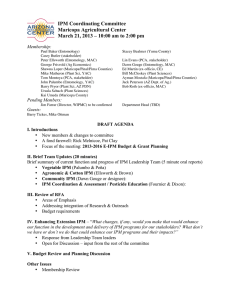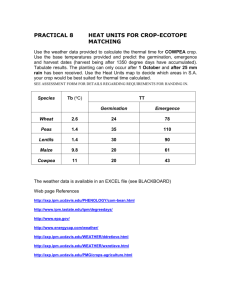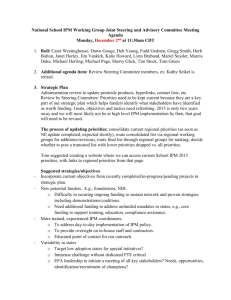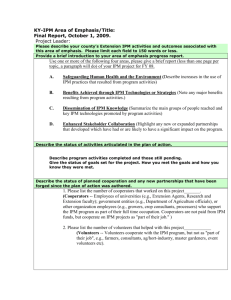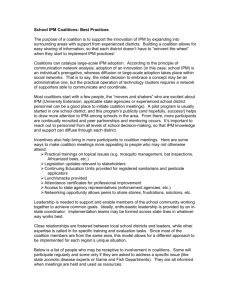autonomous
advertisement
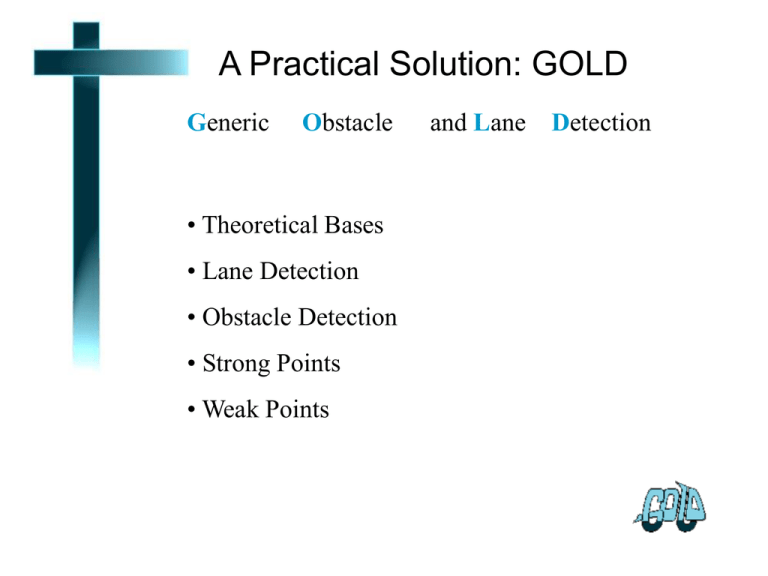
A Practical Solution: GOLD Generic Obstacle • Theoretical Bases • Lane Detection • Obstacle Detection • Strong Points • Weak Points and Lane Detection Theoretical Bases The Inverse Perspective Mapping The 3d space is transformed into the image space by the Perspective Transformation. The coordinates in the 3d space are (x,y,z), and the (u,v) are the coordinates in the image space. Theoretical… (continued) Mapping from image to a z=0 plane in 3d world (IPM) Mapping from the 3d space to image space (remapping) Theoretical…(example) Camera parameters which are relevant in the computation Example of a result obtained from IPM. At right, the FOV of the camera Lane Detection a) b) c) a) Original Image b) IPM image c) Filtered image d) Enhanced image (using morfodilatation) e) Binarized image d) e) Obstacle Detection Stereo IPM Main Idea: the Zero Disparity Surface (HOROPTER) Cameras are calibrated so that the IPM images from both cameras will be identical in the features aquired from the road plane (the horopter is a line, not a curve) Obstacle Detection (cont’d) a) a) b) c) d) b) c) d) Acquired images from the left and right cameras IPM transformed images (L,R) Difference image. (Obstacles are the ones causing the differences) Remapped image. A black line indicates the detected obstacle The Computing Architecture The PAPRICA System PArallel PRocessor for Image Checking and Analysis Strong Points - Tested on MOBLAB vehicle, on extra-urban roads, for 3000km - The vehicle speed: up to 80km/h - Not influenced by shadows on the road, illumination conditions and road&vehicle texture Weak Points Lane detection fails when: - the road is not flat (a,b) - the road markings are not visible (c,d) Due to the vehicle movements slight changes appear in the camera parameters – this problem can be solved by image stabilization schemes





